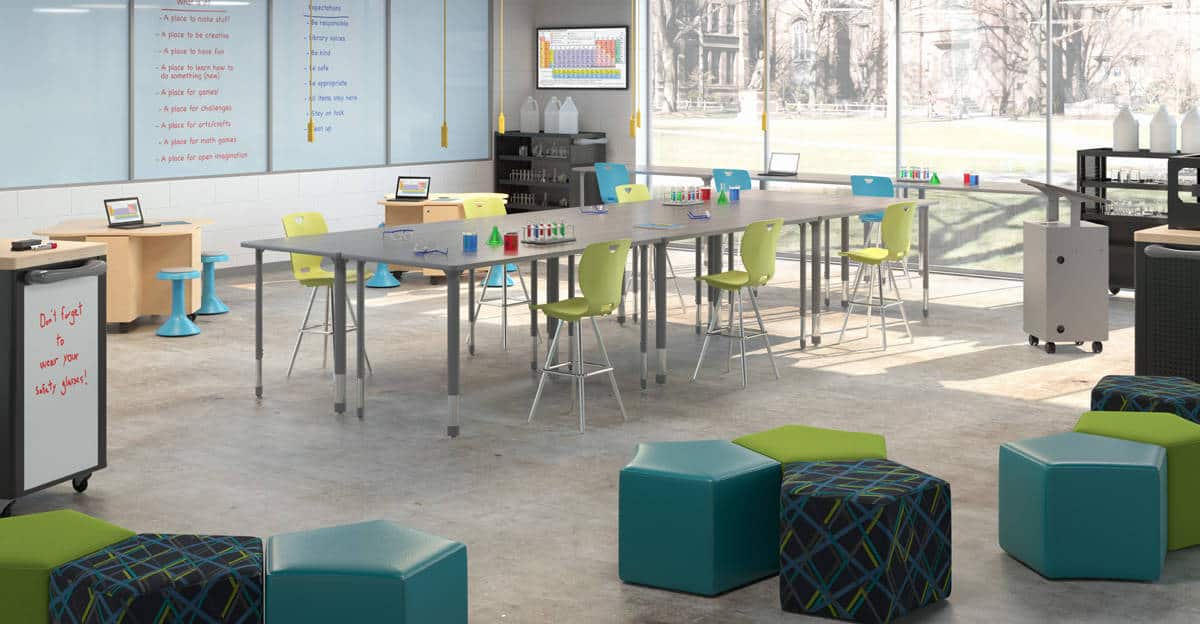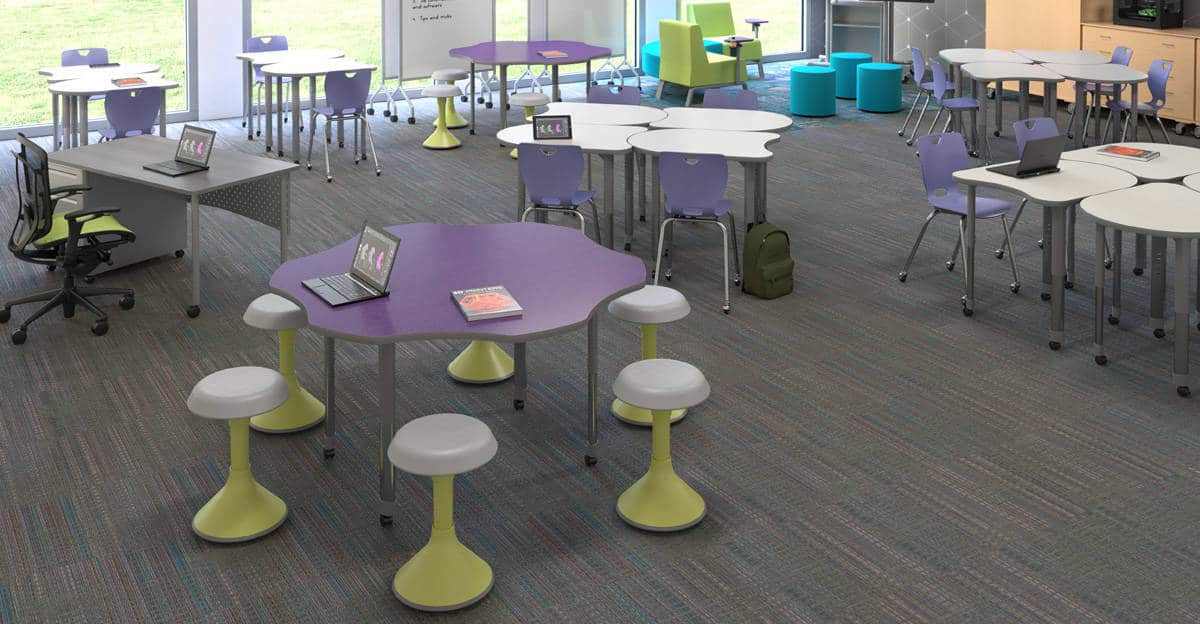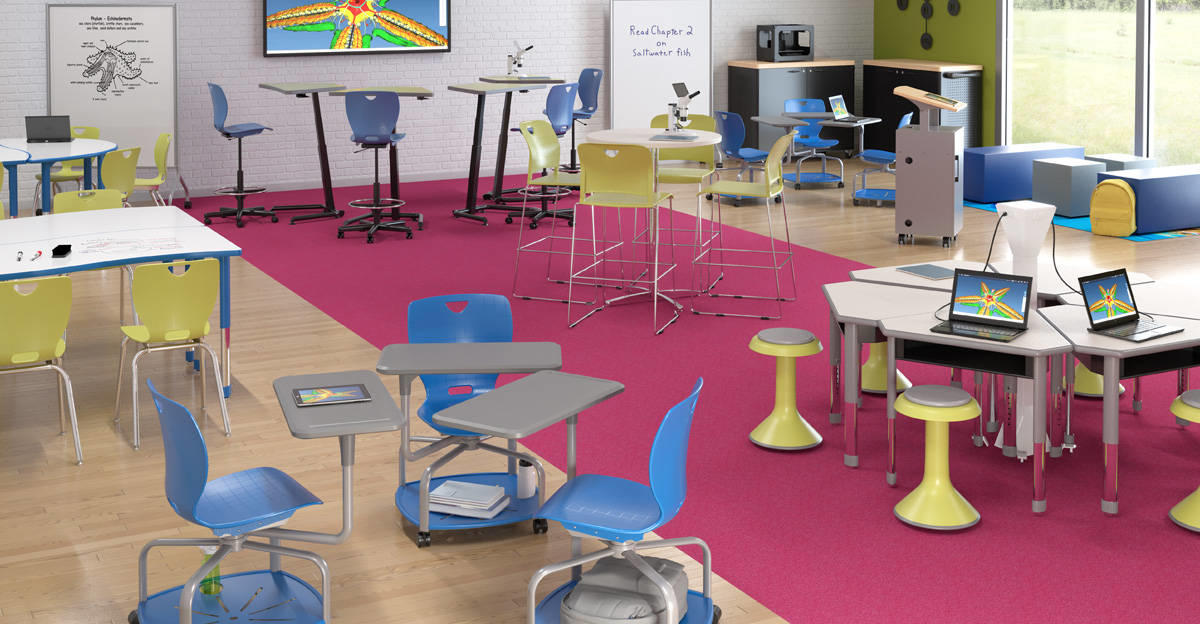The traditional classroom design that served as the de facto model for more than a century, with desks arranged in rows facing the front of the room, worked fine for when classroom instruction was mostly whole-class instruction delivered by the teacher. But teaching and learning have evolved dramatically over the last few decades—and learning environments need to change as well if they’re going to support these activities effectively.
Instead of relying on teachers as the primary source of knowledge in the classroom, students are taking charge of their own learning — and teachers are helping to guide this process. Rather than sitting passively and listening to their teacher lecture, students are investigating, finding, and synthesizing information for themselves. Instead of regurgitating facts they’ve memorized for an exam, students are demonstrating their learning by working with their peers to create new products and ideas.
Throughout all of these activities, teachers are orchestrating students’ learning with a blend of whole group, small group, and individual instruction. Teachers and students are shifting frequently between these different modes, depending on which seems most appropriate for the task at hand — and this process must occur quickly and seamlessly in order to maximize learning time.
As learning becomes more active and student-centered, students need learning environments that are as dynamic as the education they are experiencing. They need learning spaces that are highly flexible and adaptable to multiple needs — spaces that engage and inspire them.
Here are three important factors driving this shift.

Students need critical 21st century skills.
The skills students will need when they graduate aren’t the same as a generation ago. The nature of work is now radically different: Automation and outsourcing are replacing lower-skill jobs, and students will need more sophisticated skills than can’t be learned by simply sitting and taking in information.
Developing these skills requires more active forms of learning in which students are researching, discussing, analyzing, collaborating, and creating new knowledge for themselves.
Teachers need to use flexible learning strategies.
At the same time, educators are tasked with meeting a wide range of student needs. No two students are alike, and each child learns in a different way.
To meet the diverse needs of all learners, teachers are designing powerful classroom experiences that align with the Universal Design for Learning framework by giving students multiple ways of engaging with lessons, acquiring new knowledge, and demonstrating their learning.

Student expectations have shifted.
As the skills that students need for success are changing, and teachers are looking to meet a wide range of learning needs, technology is also changing how students learn at home — and therefore how they expect to learn when they’re at school.
The Internet has opened an entire world of information to students. Today’s students are accustomed to using the web for self-directed learning at a very young age, and powerful technologies now enable them to develop, edit, publish, and share their own creative works — from blog posts and fan fiction to music, videos, and other inventions. Students are spending their free time looking up information for themselves, connecting with friends online to work on projects together, and exercising their creativity … and this is how they expect to learn at school as well.
To learn more about how learning environments must change in response to these key trends, download our FREE guide: “6 Essential Elements of a Modern Learning Environment.”
Download the Free Guide





Leave a Reply